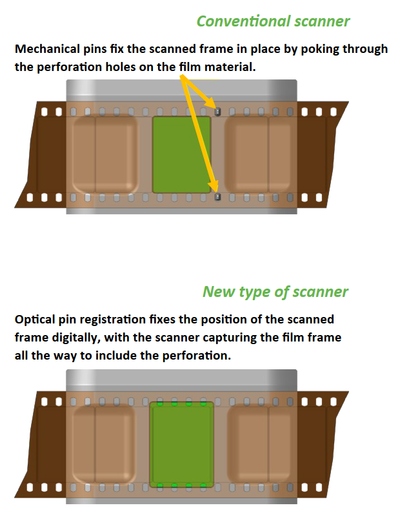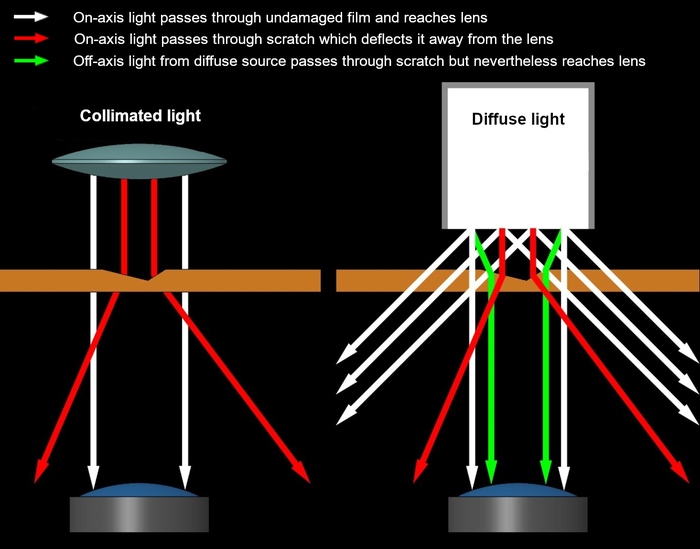Scanner brand
Lasergraphic – ScanStation
Input film format
35mm, 16mm, Super 16mm, 28mm, 17.5mm, 9.5mm, 8mm, Super 8mm
Output resolution and formats
5,5K, 5K, 4K, 2K HD, SD
formats: ProRes 4444XQ, 422 HQ, DPX, TIFF and others -> …. H264, H265
 “Pinless scanning” technology
“Pinless scanning” technology
Conventional scanners use pins when scanning film frames: when a frame is stopped to be captured, pins are placed into the perforations and align the film into exact position. If, however, the film is damaged or shrunken, the spacing between the perforations is changed and does not correspond to the settings of the pins. The result is jitter and above all the danger of damaging the perforation holes.
Modern film scanners use optical pin registration. A beam of light measures each frame all the way to the perforation. It then digitally places the captured image into the proper position. The result is a jitter-free picture even despite warping or damage.
Although scanning is achieved through optical registration of the perforation holes, the technology is not disrupted when scanning films where perforations are missing or already damaged. It can tolerate the absence of up to 15 perforation holes. It can also easily overcome potential splicing.
Pinless scanning technology is an important advantage for older films where age has led to a change in dimensions through shrinkage or warping. Another advantage is that fragile perforations are protected against further damage. The technology naturally cannot suppress jitter that originated when the film was being shot.



